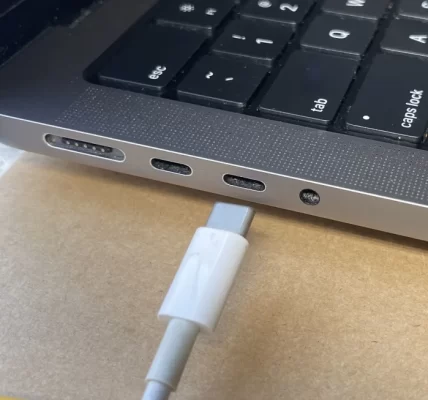HomeAssistant Event Hash: A Complete Guide to Understanding and Using Event Hashing in HomeAssistant
HomeAssistant is renowned for its flexibility in home automation. Whether you’re controlling your lights, heating, or even monitoring your home’s security, HomeAssistant makes it simple to automate these tasks. One of the less discussed, yet highly useful, features of HomeAssistant is the event hash. If you’ve never heard of this term, HomeAssistant event hash or if you’re curious about how it can enhance your automations, then you’re in the right place. This article will take you through everything you need to know about HomeAssistant event hash and how to use them effectively.
What is HomeAssistant?
Before diving into the specifics of event hashes, let’s briefly go over what HomeAssistant is. HomeAssistant is an open-source platform designed to help users automate their homes by integrating various smart devices. With support for a broad range of devices and platforms, it allows you to create complex workflows and automations that can trigger based on time, user input, or specific events.
Understanding Events in HomeAssistant
Events play a critical role in HomeAssistant’s automation workflows. In simple terms, an event is a signal that something has occurred. For example, when a motion sensor detects movement, it generates an event. Similarly, when a smart light turns on, it also sends out an event. These events are central to HomeAssistant’s ability to trigger automations.
What is a HomeAssistant Event Hash?
A HomeAssistant event hash is essentially a unique identifier generated for an event. This hash serves as a fingerprint for the event, helping users or scripts track and identify specific occurrences within the system. It ensures that even if multiple similar events occur, each one has a distinct identifier. This is especially useful when dealing with complex automations that rely on identifying specific events to execute particular actions.
Purpose of Event Hashes in Automation
Event hashes help HomeAssistant users distinguish between multiple HomeAssistant event hash events that may happen in quick succession or with similar parameters. They allow for more granular control over automations by identifying each event as unique. For instance, when an event hash is logged, it can be referenced later in your automations or scripts to act upon the specific event that triggered it.
How Event Hash Works in HomeAssistant
Event hashes are typically generated automatically by HomeAssistant when an event HomeAssistant event hash occurs. Each hash is a combination of the event’s unique characteristics, including the type of event, the time it occurred, and any associated data.
For example, let’s say your motion sensor detects movement. HomeAssistant records this event and creates a unique event hash based on factors such as the time, sensor ID, and other metadata. This hash can then be used to trigger a specific action, such as sending a notification or turning on a light.
Why Event Hashes Are Important
Event hashes are particularly valuable when working with automations that require precision. Suppose you have multiple motion sensors or multiple similar events happening simultaneously. In that case, an event hash ensures that your automation system can correctly identify each individual event, even if they are of the same type. This precision can help prevent errors in your automations, such as triggering the wrong action or duplicating tasks.
Generating and Accessing Event Hashes
To generate and access HomeAssistant event hash event hashes in HomeAssistant, you can HomeAssistant event hash use the built-in event logging system. Whenever an event is triggered, HomeAssistant logs it along with its corresponding hash. These hashes can be viewed via the HomeAssistant frontend or through the developer tools.
Steps to Generate an Event Hash:
- Trigger an event (e.g., by activating a sensor).
- Navigate to HomeAssistant’s developer tools.
- Find the event log and locate the hash associated with your event.
- Use the hash in automations or scripts as needed.
Tracking Events with Event Hashes
Event hashes make it easy to track specific events. You can use these hashes to monitor the flow of events in your system, ensuring that your automations are only triggered by the correct events. This is particularly useful for debugging or fine-tuning your automation processes.
Event Hash in Automations
Event hashes can be directly incorporated into automations to ensure that the correct actions are taken based on specific events. For example, you could set up an automation that triggers a notification when a particular event hash is generated. This is especially helpful when multiple events are similar but need different outcomes.
Practical Use Case:
You might have a scenario HomeAssistant event hash where multiple motion HomeAssistant event hash sensors are installed in different rooms. Each motion event could trigger the same automation. By using event hashes, you can ensure that the automation responds differently based on which sensor’s event triggered it.
Customizing Automations with Event Hashes
For advanced users, event hashes offer even more control. You can fine-tune your automations to trigger only under specific conditions related to the event hash, ensuring that your system remains efficient and error-free.
Incorporating Event Hashes into Scripts and Templates
Event hashes can be integrated HomeAssistant event hash into scripts and templates to HomeAssistant event hash make your automations more dynamic. For example, you could write a script that takes the event hash as an argument and uses it to decide which action to take. In templates, you can use hashes to customize responses based on which specific event occurred.
Advanced Use of Event Hashes
For complex automations, event hashes provide a way to manage event-based workflows efficiently. By combining event hashes with other automation tools, like timers or triggers, you can create powerful and responsive automation routines that respond intelligently to the events in your system.
Troubleshooting Event Hash Issues
If you run into problems with event hashes, it’s often due to misconfiguration or misunderstanding how the hashes are generated and used. Double-check the event log to ensure you are using the correct hash in your automation. Additionally, developer tools provide insights to debug any hash-related issues.
Best Practices for Event Hashing in HomeAssistant
- Always log and track your event hashes for critical automations.
- Use event hashes to avoid triggering multiple automations for similar events.
- Regularly audit your automations to ensure event hashes are being used effectively.
Event Hash vs Event ID: What’s the Difference?
While both event hashes and event IDs serve to identify events, they have different uses. An event ID is usually a more general identifier, while an event hash is unique to each event occurrence. Event hashes are particularly useful for tracking individual instances of similar events.
FAQs
- What is the purpose of event hashing in HomeAssistant? Event HomeAssistant event hash hashes help uniquely identify each event, making automations more precise and reliable.
- Can I manually create an event hash in HomeAssistant? No, event hashes are automatically generated by HomeAssistant based on the specific characteristics of each event.
- How do I debug issues with event hashes? Use the developer tools in HomeAssistant to view event logs and track event hashes for troubleshooting.
- Can event hashes be reused in multiple automations? Yes, event hashes can be referenced in multiple automations, but they are unique to each event occurrence.
- What are some advanced use cases for event hashes? Event hashes are useful for complex automations, such as distinguishing between similar events or triggering actions based on specific event flows.
Conclusion
In HomeAssistant, event hashes are a powerful tool that can make your HomeAssistant event hash automations smarter and more precise. By using event hashes, you can track, customize, and fine-tune your automations to respond to specific events with accuracy and reliability. Whether you are new to HomeAssistant or an advanced user, understanding and utilizing event hashes can take your home automation to the next level.




